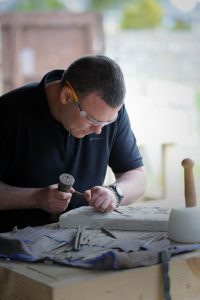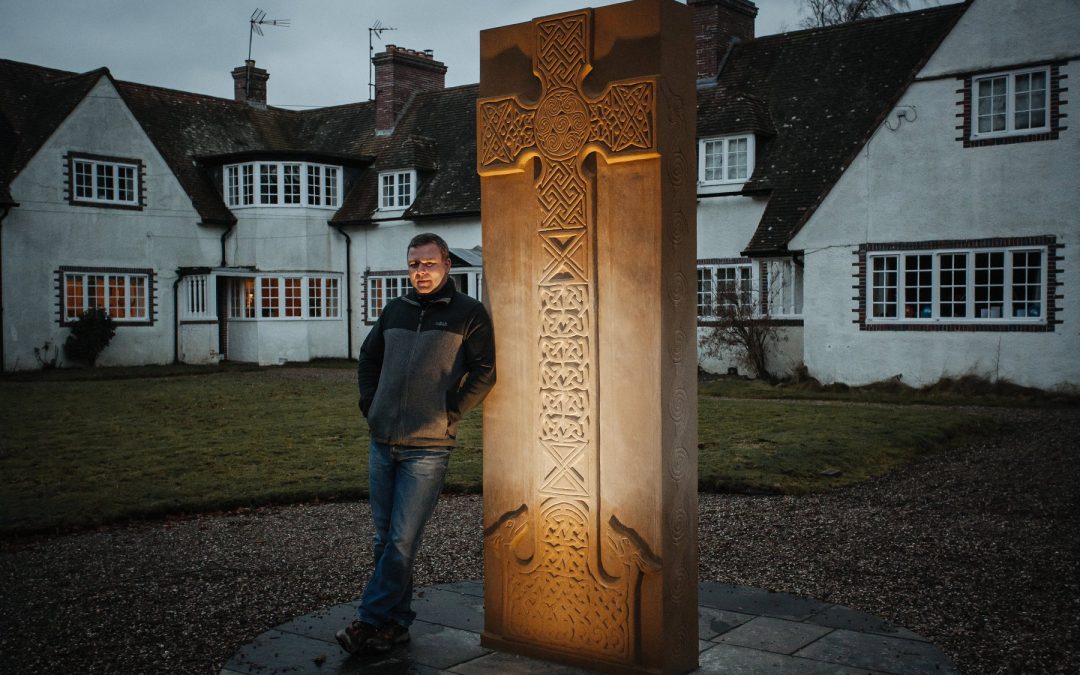A blog by David McGovern of Monikie Rock Art. Amongst other projects, David is currently working on a replica of the recently-discovered Conan Stone. The original can be seen in Dingwall Museum, and the replica is due to go on display locally later this year – watch this space!
I love Pictish Art. It all started for me when I was around 14. The symbols appealed to me on an aesthetic level and the fact I could easily visit monuments like the Dunnichen Stone, which was then in the McManus Museum in Dundee, fired something up in me that’s been with me ever since. When I approach a Pictish Stone that I haven’t visited before there is still an excitement about it that I cant describe. These days, much of my working life is spent looking at Pictish Art in detail- and recreating it in stone. I also create new Pictish art- like my New Forteviot Cross in Perthshire- that takes the conventions, style and forms of Pictish Art and kicks the can down the road a bit. In that sense, Pictish Art isn’t dead, if we use and adapt it, as well as interpreting the work from the distant past.
One of the questions I’m asked as a stone carver is, “How long did it take to carve a large Pictish Stone?”. I was able to answer that question a few years ago when the Tay Landscape Partnership commissioned me to care a new 9 feet tall Pictish cross for the village of Forteviot. It took a full year to design and carve a new-design cross-slab in sandstone. The front of the stone took the form of a cross, combining elements from various stone fragments found in the surrounding area. The back of the stone has an image of King Cinaed Mac Alpin on horseback with St Serf and other imagery. The piece is a work of imagination. That’s one thing that distinguishes Pictish cross-slabs from say the high crosses of Ireland. The imaginative images, alongside borrowings from the classical world- like centaurs- and Christian iconography. That’s what inspires me to create new Pictish Art.


In the last year I’ve installed two new-design Pictish stones at St Vigeans in Angus. I have another two on the drawing board as I write this. One is 8 feet tall and will be installed in Angus. The other will be installed near Dunning in Perthshire. The workshop is also busy with activity as my two trainees work on their own pieces of work. We have a replica of a 16th century Clanranald armorial stone ready for delivery and we are making room for a large piece of stone that will become a replica of the Conan Stone – due to be installed later this year.
I’m never happier than when I’m in my workshop with music blaring away, carving Pictish symbols and creatures, far away from the crazy world we live in, but I also make time to train new stone carvers and pass on the skills I’ve learned. Carving things that will last forever is as close to a feeling of immortality as a human can get. But passing on the skills and ensuring Pictish Art lives on is the greatest reward.

